With a commanding view of both Lake Ontario and the Niagara River, the old colonial fort has a long and complicated history connecting it to three different nations that formed the basis of the modern countries that exist today. Not to mention it serves as the oldest collection of stone buildings west of Montreal and the oldest fortification I have had the honour of visiting and documenting. I’m of course talking about Fort Niagara.
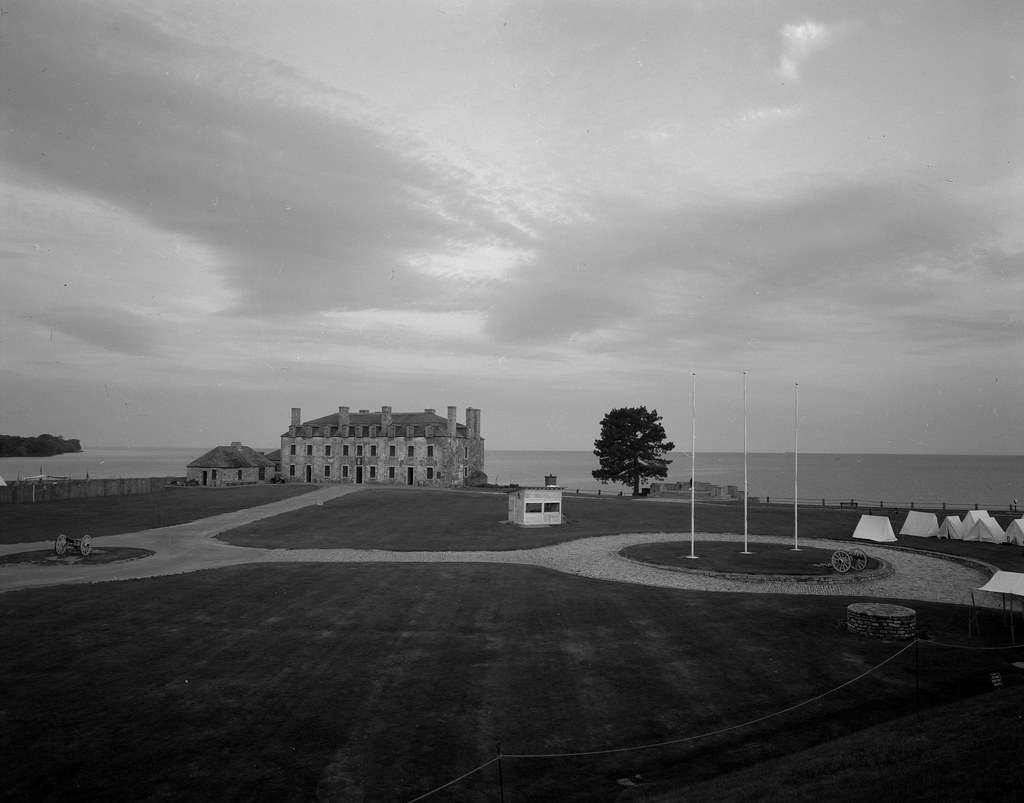
The French Castle is the oldest and central structure of Fort Niagara and dates back to 1729.
Pacemaker Crown Graphic – Schneider-Kreuznack Angulon 1:6,8/90 – Kodak Tri-X Pan @ ASA-320 Kodak Xtol (1+1) 7:45 @ 20C
It was the French who first established a base of operations here at the mouth of the Niagara River, realizing the peninsula as strategic position for both the fur trade and military control of the area. The first fort, Fort Conti established in 1678 was little more than an armed trading post that served as a terminus for the Niagara Portage Road allowing traders to safely travel around the mighty Niagara Falls. But the hard winter took its toll, and the post was abandoned. Not to loose out, the French would return in 1687, and by the next year, the fort became the center of all trading in the region.
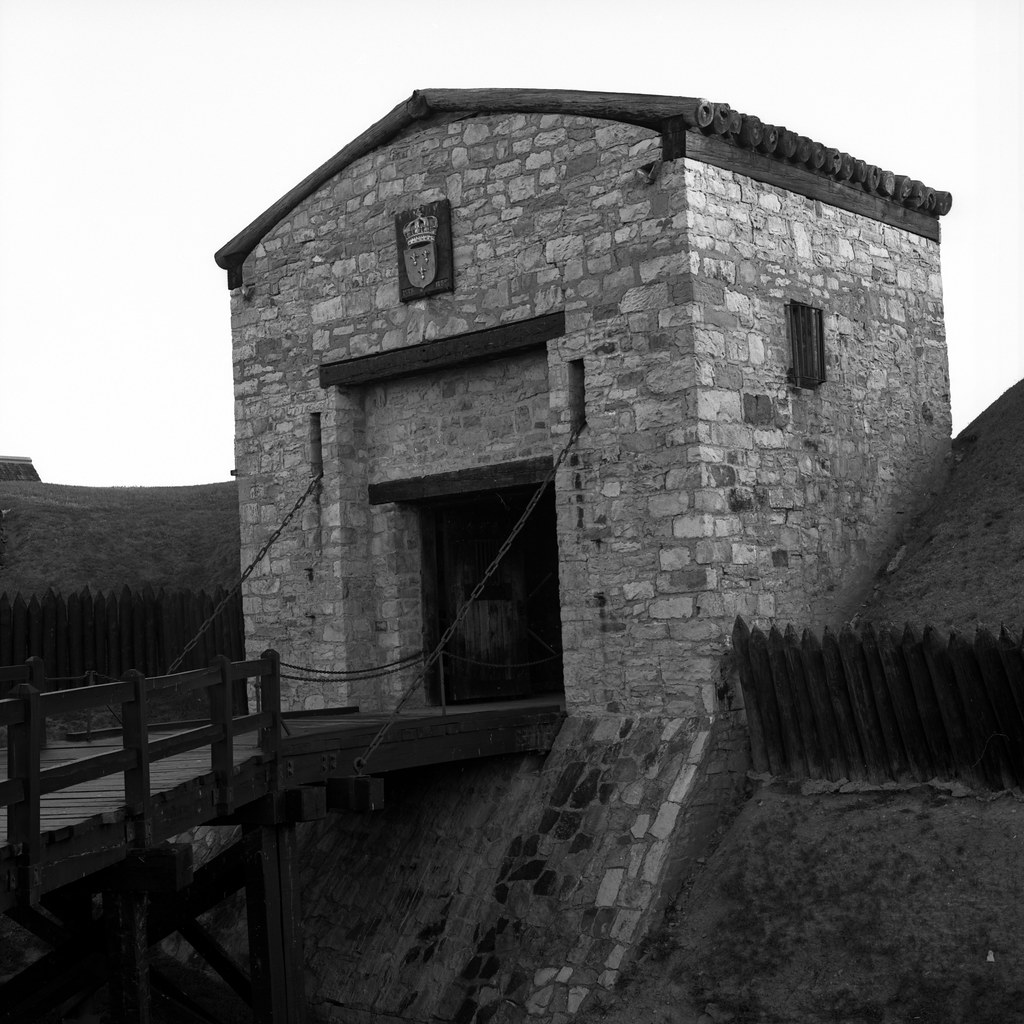
The Gate of Six Nations also dates to the early 18th-Century, by the Anglo-American War of 1812, the Americans had barricaded it off.
Hasselblad 500c – Carl Zeiss Planar 80mm 1:2.8 – Rollei RPX 25 @ ASA-25 – Blazinal (1+25) 6:00 @ 20C
By the middle of the 18th-Century tensions between the British and the French had reached a breaking point and exploded into the Seven Years War, or as it was known the French-Indian War locally. By the 1750s Fort Conti had expanded and now bore the name Fort Niagra with extensive masonry fortifications and buildings it fell under British siege in 1759. And on 26 July 1759, the fort was surrendered to the British. The British began their construction work on the French fort, not wanting to face a potential counter-attack by the French. Two tower bastions were added during this period as well as expanding the artillery battery. Fort Niagara remained a British stronghold throughout the American Revolutionary War, acting as a haven for United Empire Loyalists and acting as a jumping off point for British Regulars, Loyal Militia Units, and Provincial regiments. The British continued to hold the fort even after the Treaty of Paris, forced only my the Jay Treaty of 1796 to turn the post over the American Army.
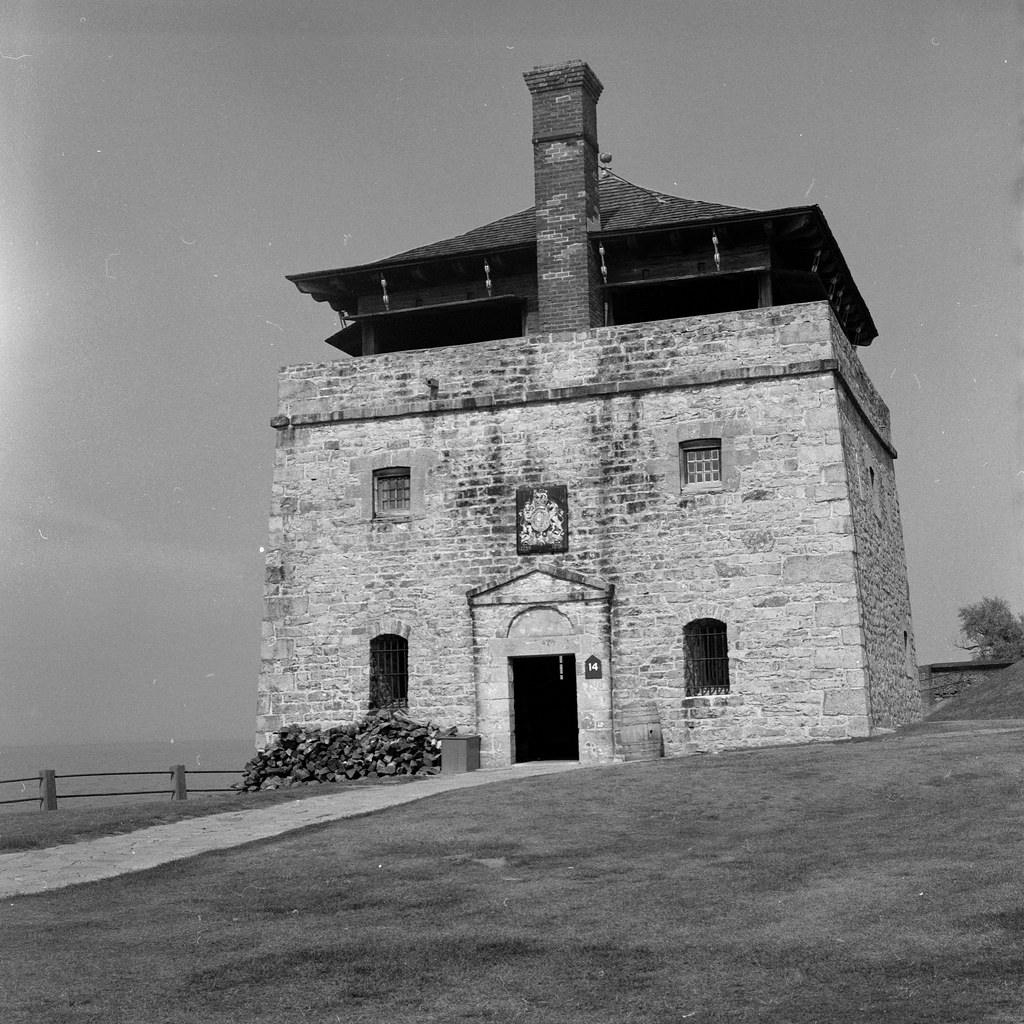
One of two British built bastions following the fort’s capture in 1759.
Hasselblad 500c – Carl Zeiss Planar 80mm 1:2.8 – Ilford HP5+ @ ASA-200 – Pyrocat-HD (1+1+100) 9:00 @ 20C
In the early years of the American occupation of the fort following the Jay Treaty, the Fort Niagara Garrison and that at Fort George were friendly, both fort’s hosting the others officers for dinners. The family’s of the officers of Fort Niagara were also known to frequent Sunday Servies at St. Mark’s Church in the town of Niagara (Niagara-On-The-Lake, Ontario). This all changed when war was declared in 1812. During the first year of the war, the fort did little besides exchange artillery fire with Fort George. But that would all change in 1813, command of the fort was turned over to Major George Armistead, and was an active player in the capture of Fort George and the town of Niagara. Armistead would take the garrison flag of Fort George to Washington and would be given command of Fort McHenry for his actions. Of the course the victory was short lived, Drummond in anger over the destruction of the town of Niagara ordered the capture of the fort and in a perfectly executed assault saw the Fort taken at Bayonet point. The fort would remain in British hands despite the efforts of the militia units that kept the British pretty much pinned in the fort until the war’s end in 1815 when control returned to the Americans.
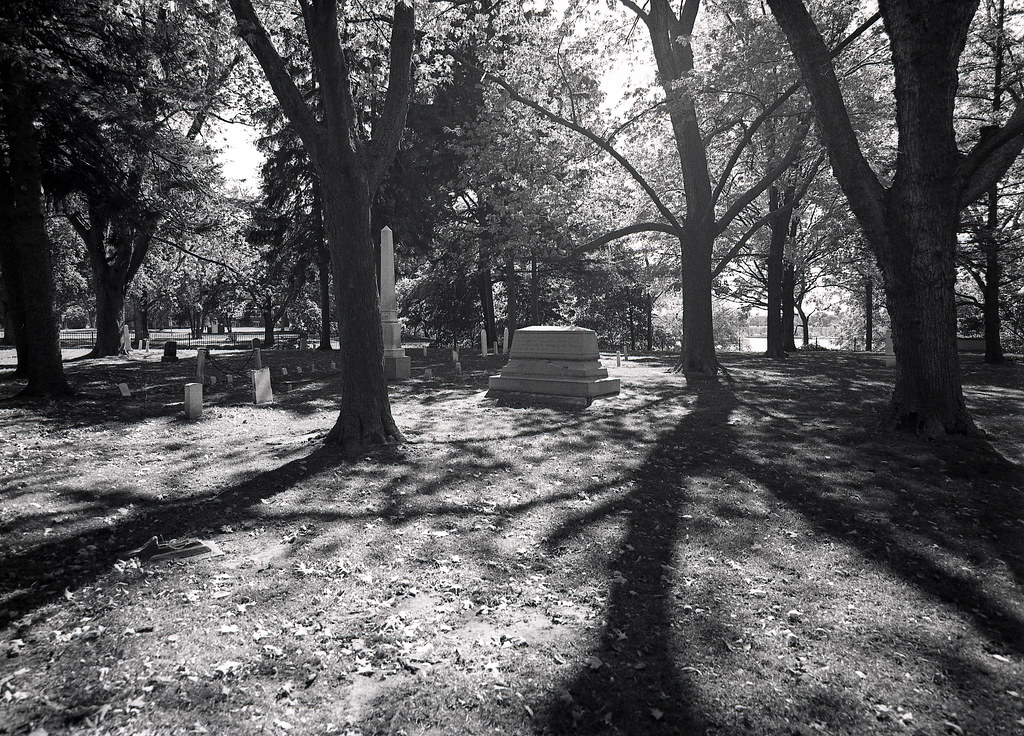
One of my favourite spots on the Fort Niagara grounds is the cemetery, at the right time of day, the light through the trees perfectly illuminates the War of 1812 memorial.
Pentax 645 – SMC Pentax A 645 35mm 1:3.5 – Kodak Tri-X 400 @ ASA-400 – HC-110 Dil. B 7:30 @ 20C
While peace descended on the Niagara River, the Americans would continue to maintain their garrison at the old fort, the British would check them with Fort Mississauga on the Canadian side of the river. The fort would see an expansion during the American Civil War when the capture of a Confederate Ship carrying a British ambassador nearly caused the two countries to again go to war. Thankfully the incident was resolved through diplomatic means. The American Civil War would see the age of colonial masonry forts come to an end with modern weapons that could easily defeat such walls. But this did not stop the US Military from continuing the use the site as an Army Camp. It soon became known as Camp Niagara as the 19th-Century came to a close. The camp would house and train American Troops through the First World War. The camp would also serve through the Second World War and even into Korea.
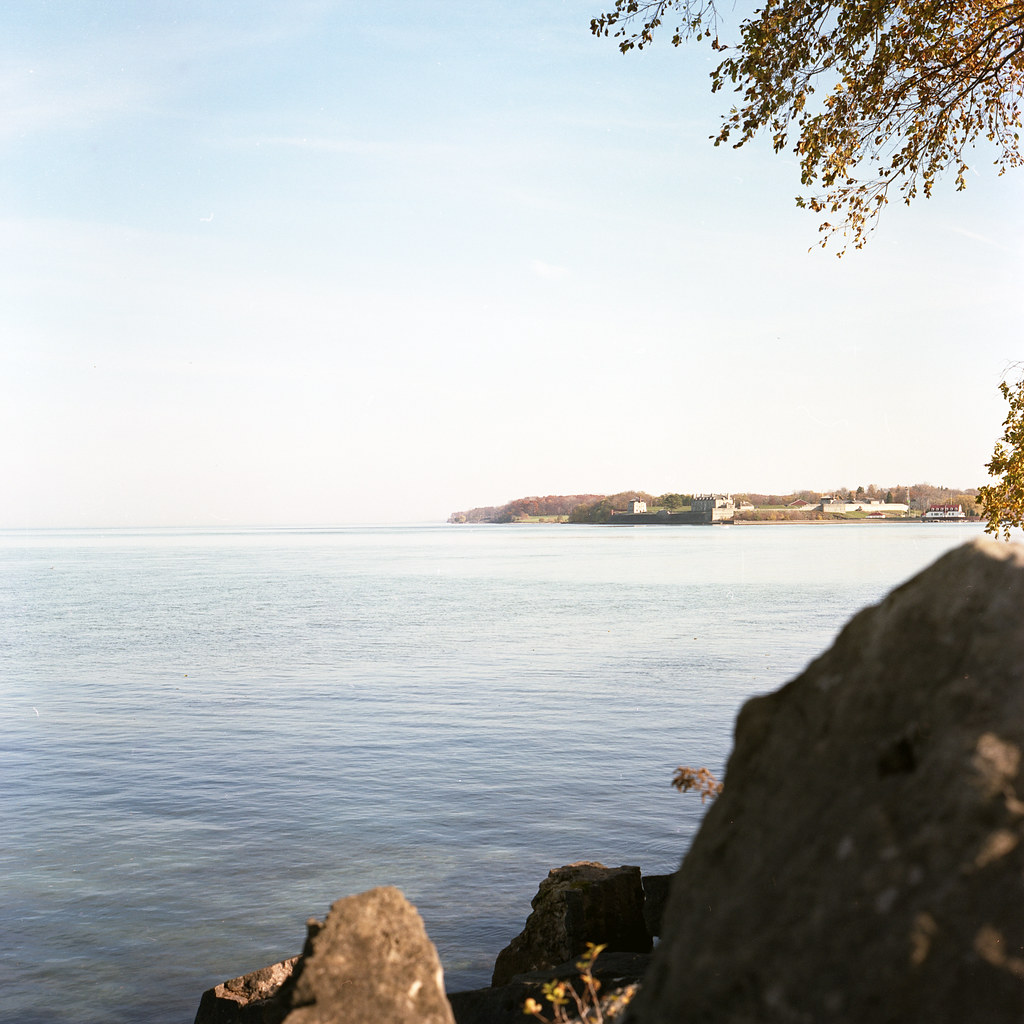
Fort Niagara as seen from the Canadian side of the River from just below Fort Mississauga.
Rolleiflex 2.8F – Carl Zeiss Planar 80mm 1:2.8 – Fuji Pro 160 @ ASA-160 – Unicolor C-41 Kit
Restoration of the colonial fort dates back to the 1920s when the 1729 French Castle was first opened to the public as a museum. Work increased to support the local population as a provider of employment after the stock market crash of 1929 as a make-work project, and by 1934 the whole colonial fort was restored and open to the public even with the military post still in operation. The army would disband the camp in 1963. The New York Parks Department would remediate the grounds, and the Fort Niagara State Park opened to the public in 1965. The fort hosts an annual reenactment of the 1813 capture over the Labour Day long weekend and in 2013 hosted a capture event on the same day and time of the one in 1813. Of late, with climate change and rising water level, there is still a threat to the original colonial fort, which still holds the title of longest occupied military outpost in North America as the US Coast Guard still operates a base out of the property.
Written with files from:
Guidebook to the Historic Sites of the War of 1812 Second Edition by Gilbert Collins – 2006 The Dundurn Group Publishers
Lossing, Benson John. The Pictorial Field-book of the War of 1812. Gretna, LA: Pelican Pub., 2003. Print.
Web: oldfortniagara.org